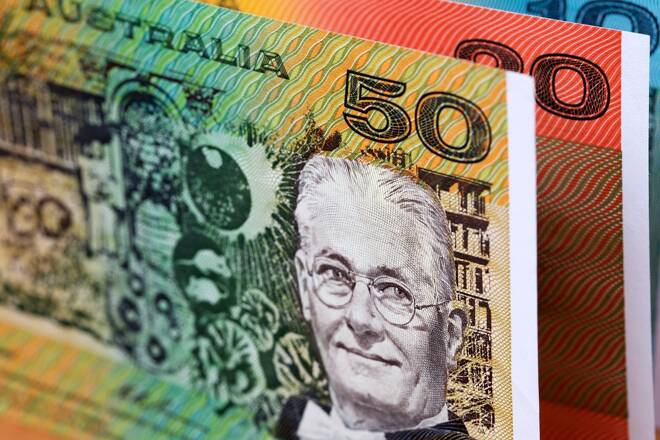Advertisement
Advertisement
AUD to USD Forecast: Sub-$0.67 Eyed on Fed Chair Powell Fence Sitting
By:
The AUD to USD is in for a choppy session, with Fed Chair Powell leaving the door ajar. US economic indicators will also delivery vol later in the session.
Highlights
- It will be a tricky Wednesday session for the AUD/USD.
- Investors will respond further to the Fed Chair Powell press conference while considering Politburo pledges and Australian inflation numbers.
- The near-term technical indicators turned bearish, signaling a return to sub-$0.67 on monetary policy divergence.
On Wednesday, the AUD/USD fell by 0.51% to end the day at $0.67571. Softer Australian inflation numbers sent the Aussie south as investors raised bets on the RBA hitting the brakes. Late in the session, the Fed and Fed Chair Powell supported a partial recovery of heavier losses.
This morning, there are no economic indicators from Australia or China to influence investor sentiment. The lack of economic indicators will leave investors to react to the overnight Fed interest rate decision and press conference.
While the Fed raised rates by 25 basis points, Fed Chair Powell weighed on the hopes of an end to the monetary policy tightening cycle, saying,
“It is certainly possible that we would raise the (Fed) funds rate again at the September meeting if the data warranted, and I would also say it’s possible that we would choose to hold steady at that meeting.”
The comments were enough for investors hopeful of US inflation softening further during the summer break. However, after the softer inflation numbers from Australia, the Chinese economy will be another consideration today.
The US Session
US core durable goods and jobless claims will draw interest. However, prelim Q2 GDP numbers should have more influence. Fed Chair Powell and the markets are betting on a soft landing. Weaker-than-expected GDP numbers could reignite recessionary fears in the wake of the Fed 25-basis point interest rate hike.
While the GDP number will be the focal point, jobless claims numbers should continue reflecting tight labor market conditions. Tight labor market conditions would support consumer confidence and spending, both material to service sector activity. However, tight labor market conditions would also leave a September Fed rate hike on the table.
AUD/USD Price Action
Daily Chart
The Daily Chart showed the AUD/USD slide through the $0.6755 – $0.6729 support band on softer inflation numbers. However, support at the lower level ($0.6729) of the $0.6755 – $0.6729 support band limited the downside.
The AUD/USD fell through the 200-day EMA ($0.67517) before the late Powell-fueled recovery. This morning, the AUD/USD held above the 200-day ($0.67517) and 50-day ($0.67238), sending bullish near and longer-term price signals.
Despite the bearish Wednesday session, the 50-day EMA narrowed to the 200-day EMA, supporting a more bullish near-term outlook.
Looking at the 14-Daily RSI, the 52.14 reading signals a bullish trend and supports a run at $0.68. However, an AUD/USD fall through the upper level of the $0.6755 – $0.6729 support band and the 200-day EMA ($0.67517) would bring the 50-day EMA ($0.67238) into play.
4-Hourly Chart
Looking at the 4-Hourly Chart, the AUD/USD hovers above the $0.6755 – $0.6729 support band. The AUD/USD sits below the 50-day EMA ($0.67643) while holding above the 200-day EMA ($0.67319), sending bearish near-term but bullish longer-term price signals.
Significantly, the 50-day EMA narrowed to the 200-day EMA, supporting a fall through the 200-day EMA ($0.67319). However, a move through the 50-day EMA ($0.67643) would give the bulls a run at $0.68.
Looking at the RSI indicator, the 14-4H RSI reading of 49.04 indicates bearish momentum, with selling pressure outweighing buying pressure. The RSI is aligned with the 50-day EMA, supporting a fall through the 200-day EMA ($0.67319).
About the Author
Bob Masonauthor
With over 28 years of experience in the financial industry, Bob has worked with various global rating agencies and multinational banks. Currently he is covering currencies, commodities, alternative asset classes and global equities, focusing mostly on European and Asian markets.
Advertisement
